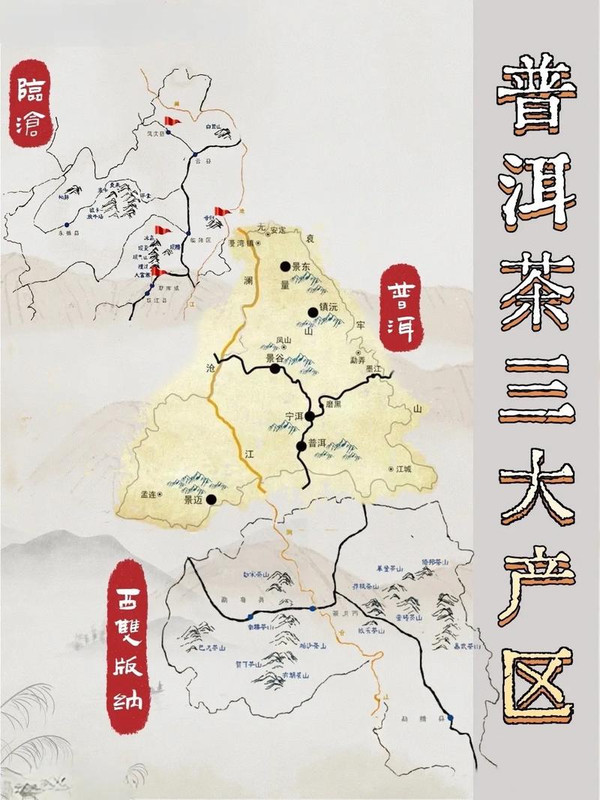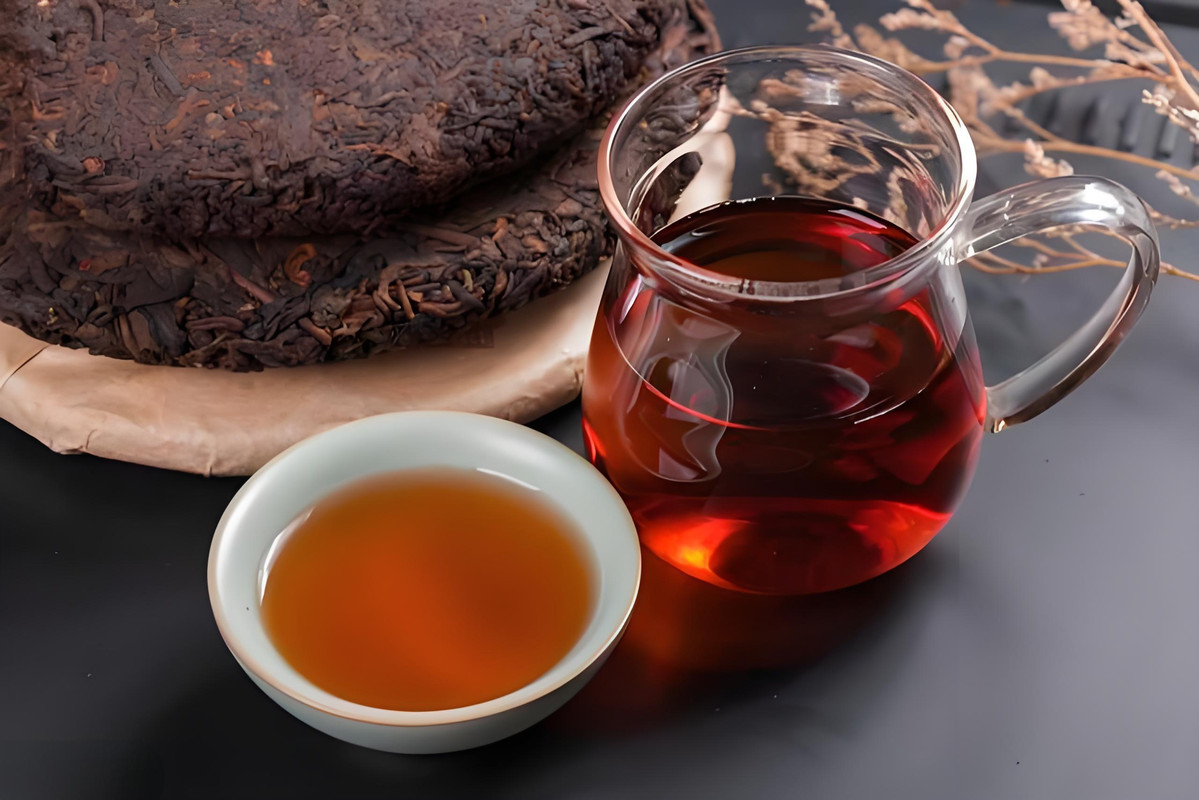Pu’er tea, a renowned type of fermented tea originating from Yunnan Province, China, boasts a rich history and unique flavor profile that has captivated tea enthusiasts worldwide. This article delves into the geographical distribution of Pu’er tea, exploring its main producing areas, growing environments, and varietal characteristics.

Main Producing Areas
Pu’er tea is primarily produced in four major regions in Yunnan Province: Xishuangbanna, Lincang, Pu’er City, and Baoshan.
- Xishuangbanna
- Location: Located in the southern part of Yunnan, Xishuangbanna is considered the core producing area of Pu’er tea.
- Characteristics: Known for its ancient tea mountains, including both the historic “Six Famous Tea Mountains” and the newer “Six Famous Tea Mountains.” The tea from this region is characterized by its strong tea flavor, high aroma, and pronounced bitterness.
- Sub-regions: Xishuangbanna is further divided into Menghai and Mengla tea-producing areas.
- Menghai: Includes famous tea mountains such as Nannuo, Bulang, Mengsong, Bada, Hekai, and Pasha.
- Mengla (also known as Yiwu): Renowned for its gentle and sweet tea with unique aromas, representative tea mountains include Mansong, Wangong, Mahei, and Guafengzhai.
- Lincang
- Location: Situated in the western part of Yunnan, Lincang is hailed as the “Warehouse of Tea” due to its abundant supply of Pu’er tea raw materials.
- Characteristics: Famous for producing high-quality teas like Bingdao, which is known as the “Queen of Pu’er Tea.” Other notable teas from Lincang include Mangfei, Daxueshan, and Xigui, collectively known as the “Four Dragons of Lincang.”
- Sub-regions: Lincang mainly comprises the Mengku and Bangdong tea-producing areas.
- Mengku: Home to 18 villages, including renowned teas from Xigui, Nahan, Mangang, Daqing, and Lvshuitang.
- Bangdong: Known for its high-altitude, low-latitude teas like Xigui, which is often compared to the tea from Banzhang in Xishuangbanna.
- Pu’er City
- Location: Located north of the Lancang River, Pu’er City (formerly known as Simao) has been a major hub for Pu’er tea distribution since the Qing Dynasty.
- Characteristics: Famous for its diverse tea mountains, including Bangwei, Jingmai, Qianjiazhai, Jinggu, and Wuliangshan. Jingmai Mountain, in particular, is known for its large-scale ancient tea gardens and is hailed as a “Natural Tea Museum.”
- Specialty: The tea from Pu’er City is characterized by its strong aroma and sweetness, with a thick and mellow taste and lasting aftertaste.
- Baoshan
- Location: Positioned in the western part of Yunnan, Baoshan is rich in wild tea trees and is praised as a “Treasure House of Tea Tree Varieties.”
- Characteristics: Although Baoshan has a higher latitude, altitude, and lower temperature compared to other tea-producing regions, its teas offer a unique mountain aroma that is highly prized.
- Sub-regions: Major tea-producing areas include Baoshan City, Changning, Tengchong, Longling, and Shidian.
Growing Environments
The ideal growing environment for Pu’er tea plants is characterized by warm and humid climates, with temperatures ranging between 18°C and 25°C. The annual rainfall should be around 1,500 millimeters, evenly distributed throughout the year, and the relative humidity should be maintained at around 85%. Additionally, the soil should be loose, deep, well-drained, and slightly acidic, with a pH value between 4.5 and 5.5.
Yunnan Province, with its subtropical and tropical climates, provides an ideal setting for Pu’er tea cultivation. The tea plants thrive in the mountainous and hilly regions along the Lancang River, benefiting from the region’s rich soil, ample rainfall, and云雾-filled environment. These conditions contribute to the unique flavor and aroma of Pu’er tea.
Varietal Characteristics
Pu’er tea is known for its diverse varietal characteristics, which can be attributed to the different growing environments and tea tree varieties. Some notable characteristics include:
- Ancient Tree Tea: Sourced from tea trees over a hundred years old, ancient tree tea is renowned for its rich, layered flavors and long-lasting aroma.
- Terraced Tea: Grown on terraced fields, this tea is characterized by its lighter taste and elegant aroma, making it suitable for daily consumption.
- Spring and Autumn Teas: Spring teas are known for their fresh and aromatic flavors, while autumn teas offer a rich and mellow taste.
Conclusion
The geographical distribution of Pu’er tea in Yunnan Province is diverse, with each producing area contributing its unique terroir and production techniques to the final product. From the ancient tea mountains of Xishuangbanna to the abundant tea gardens of Lincang, Pu’er City’s historical tea hub, and Baoshan’s unique mountain aroma, each region plays a vital role in shaping the rich tapestry of Pu’er tea. Understanding the geographical distribution and growing environments of Pu’er tea can help tea enthusiasts appreciate the nuances and complexities of this beloved beverage.



